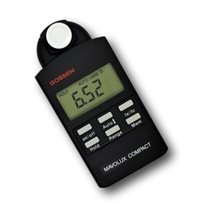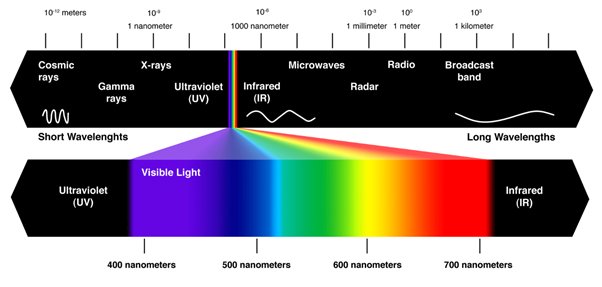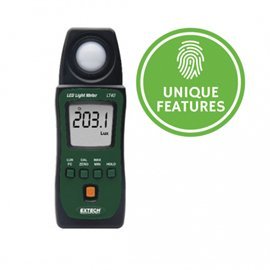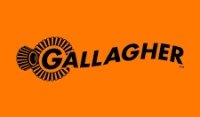How to Measure LED Light

How to Measure LED Light
LED lights are replacing other types of lighting as they are more efficient, last longer and save energy (and money).
Light meters, also known as lux meters, are the tools used to measure light. However, Not all light meters are created equal and using a general use light meter to measure LED light will produce erroneous results. To measure LED light accurately, you will need a specific light meter designed for the task.
What is LED Light?
Light is a form of electromagnetic energy that travels in waves, and these waves have both a wavelength and a frequency. In short, we humans have receptors in our eyes capable of sensing particular wavelengths and processing them into images. These visible wavelengths exist between 400 and 700nm, with individual colours present around specific wavelengths. See Figure 1 (below) for an example of the electromagnetic spectrum and visible light wavelengths.

Figure 1 Complete electromagnetic spectrum and visible light
All artificial light sources, fluorescent, incandescent and halogen, emit light in different ways. The listed examples primarily emit light from the ‘warmer’ spectra such as yellows, oranges and reds, and they do not produce much blue light.
On the other hand, most LED lights produce a narrow band of blue light, so if you are using a device that is not made to measure LED, significant errors in results can occur. See Appendix 1: Further Reading for a deep dive on the subject.
How to Measure LED light
The best way to measure LED light is to use a light meter designed explicitly for the task or that features a mechanism that can correct and measure the light intensity emitted from LED lights.
So you can find the best-LED light meter for your application, our scientists have put some examples of LED light measuring meters.

LED Light Meter
|
Testboy TV 335 Digital LED/Lux Meter
|

MAVOLUX Compact 5032-7
|
Conclusion
To measure LED light, you need a light meter designed explicitly for the task. At Instrument Choice, we stock and have access to an immense range of light meters to suit virtually any need or application.
Need more information on how to measure LED light? Need assistance or advice finding the right LED light meter for your application? Speak with an Instrument Choice Scientist: Call 1300 737 871 or email [email protected].
Appendix 1: Further Reading
Also interesting
The Atago PAL-SALT is a pocket-sized, digital salt meter designed for checking salt content within food products. It is also suitable for industrial applications, like testing the corrosion resistance of automobiles.
The Atago PAL-SALT is capable of rapidly and accurately measuring salt concentrations from 0.00 to 10.0% (g/100g). Our scientists have collaborated to make a comprehensive video to help new owners become acquainted with their Atago PAL-SALT. The video demonstrates how to perform a zero-setting, take a measurement (using a food sample), prepare a food sample dilution, and set an offset.
Learn how to use the Atago PAL-SALT Digital Hand-held Pocket Salt Meter

The Instrument Choice Team of Scientists regularly reviews new and popular products, so you can make more informed decisions when searching for the perfect scientific instrument for your application.
This review covers Gallagher Tank Level Indicator Kits, a series of highly functional, accurate and versatile tank monitoring kits.
Get our experts’ review of Gallagher Tank Level Indicator Kits

